If you've ever been to Bodega Head in Sonoma County, you may have marveled at the waves crashing and the whales surfacing.
But have you ever seen the digger bees, Anthophora bomboides stanfordiana, aka bumble bee mimics, that nest in the sandstone cliffs?
They're there. They're foraging on flowers, excavating their nests, and rearing young.
These digger bees are not easy to photograph. On our May 9th trip, we got lucky: our 200mm macro lens picked up a digger bee warming its flight muscles.
"The species name indicates that it is a bumble bee mimic," the late Robbin Thorp (1933-2019), a global authority on bumble bees and a UC Davis distinguished emeritus professor of entomology. "These bees need a source of fresh water nearby. Females suck up water, regurgitate it on the sandstone bank surface, then dig away at the soft mud. They use some of the mud to build entrance turrets, presumably to help them locate their nests within the aggregation of nests."
"The female," Thorp said, "sucks up fresh water from nearby, stores it in her crop (like honey bees store nectar) for transport to the nest. She regurgitates it on the sandstone, and excavates the moistened soil. She carries out the mud and makes the entrance turret with it."
Thorp, a 30-year member of the Department of Entomology and Nematology, studied these bees. (See his presentation at the Proceedings of the Symposium on Biodiversity of Northwestern California, Santa Rosa, delivered in October 1991.)
Today, community ecologist and associate professor Rachel Vannette from the same department, is among scientists engaged in the research of these fascinating bees.
Attached Images:
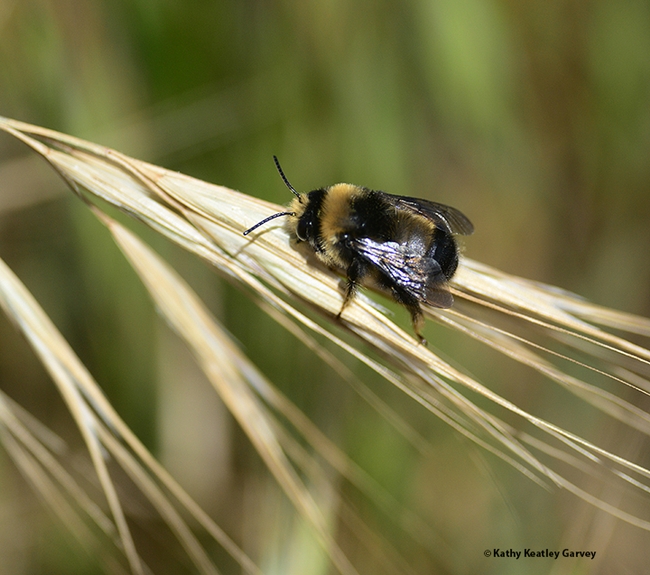
A digger bee, bumble bee mimic Anthophora bomboides stanfordiana, warming its flight muscles on Bodega Head on May 9, 2022. (Photo by Kathy Keatley Garvey)
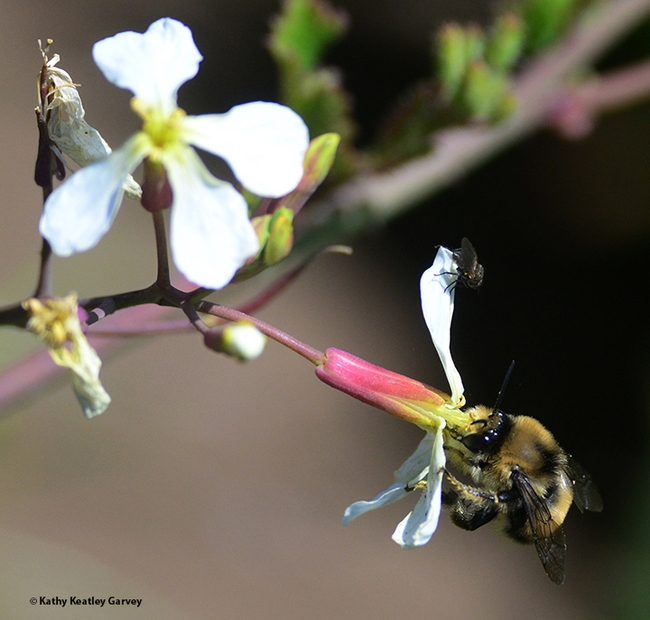
Two insects on one wildradish blossom: a fly and a digger bee, Anthophora bomboides stanfordiana, at Bodega Head on May 9, 2022. (Photo by Kathy Keatley Garvey)
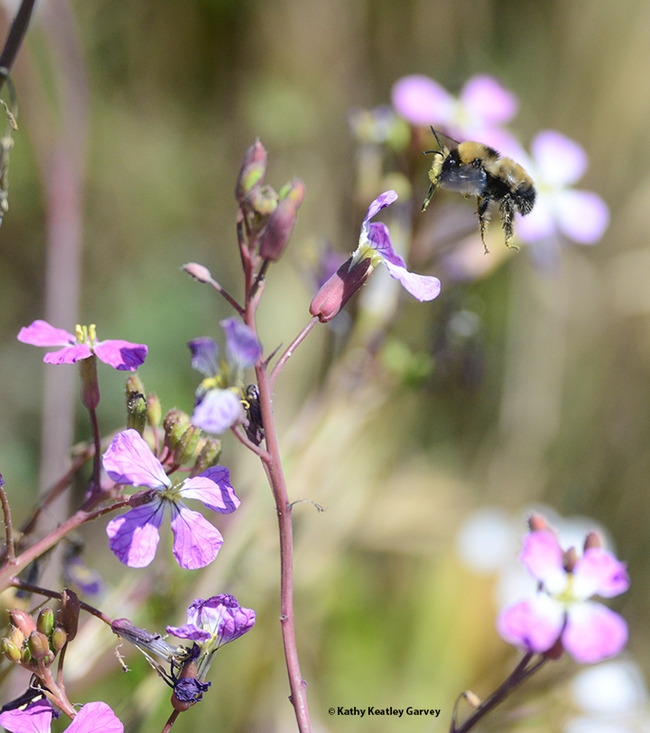
A digger bee, Anthophora bomboides stanfordiana, in flight at Bodega Head on May 9, 2022. The flower is a wild radish, Raphanus raphanistrum. (Photo by Kathy Keatley Garvey)
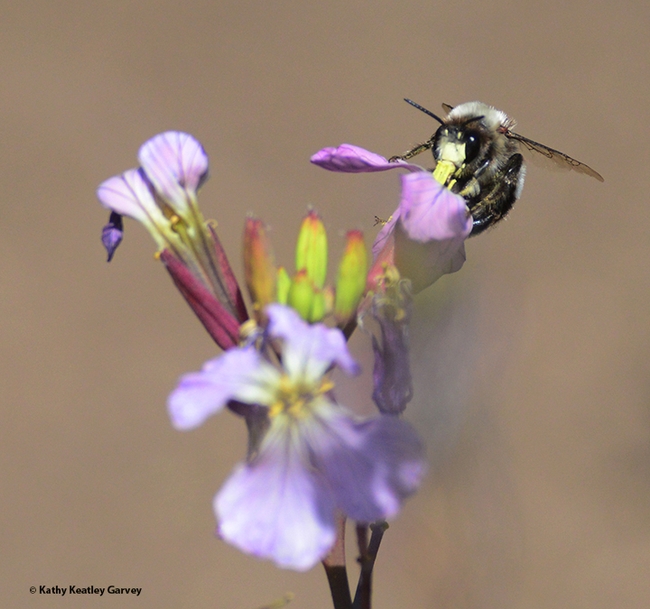
A bumble bee mimic, Anthophora bomboides stanfordiana, sipping nectar from a wild radish, Raphanus raphanistrum, on May 9, 2022 on Bodega Head. (Photo by Kathy Keatley Garvey)
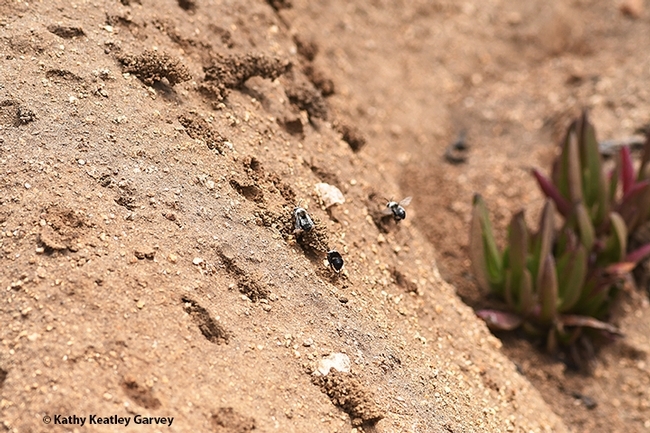
Archived photo of nests of Anthophora bomboides stanfordiana on the sandstone cliffs, Bodega Head. (Photo by Kathy Keatley Garvey)